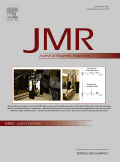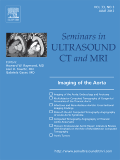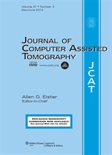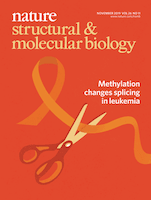
JOURNAL OF MAGNETIC RESONANCE
Scope & Guideline
Connecting Science through Magnetic Resonance Discoveries
Introduction
Aims and Scopes
- Nuclear Magnetic Resonance (NMR) Techniques:
In-depth exploration of advanced NMR techniques, including solid-state NMR, dynamic nuclear polarization (DNP), and high-resolution methods. The journal publishes research that focuses on improving the sensitivity, resolution, and application of NMR in biochemical and materials science. - Electron Paramagnetic Resonance (EPR) Studies:
Coverage of EPR techniques, including applications in studying paramagnetic species and spin dynamics. The journal highlights innovative EPR methods and their integration with NMR for comprehensive characterization of complex systems. - Methodological Innovations:
Emphasis on the development and optimization of new methodologies and techniques in magnetic resonance, including software tools for data analysis, hardware advancements, and new pulse sequence designs. - Interdisciplinary Applications:
Research that bridges magnetic resonance with other scientific fields, such as biochemistry, materials science, and medical imaging. The journal encourages studies that demonstrate the applicability of magnetic resonance techniques in diverse research areas. - Quantitative and Computational Approaches:
Focus on quantitative methods in magnetic resonance, including machine learning applications, statistical modeling, and computational simulations that enhance the interpretation of NMR and EPR data.
Trending and Emerging
- Machine Learning in Magnetic Resonance:
There is a growing trend towards the application of machine learning techniques for data analysis in NMR and EPR. This includes the development of algorithms for spectral analysis, signal processing, and automated interpretation of complex datasets. - Hybrid Techniques Combining NMR and EPR:
The integration of NMR and EPR techniques is gaining traction, allowing for more comprehensive studies of complex systems. This trend reflects a desire for enhanced sensitivity and the ability to probe different aspects of molecular dynamics. - In Vivo and Biomedical Applications:
An increasing number of studies focus on in vivo applications of magnetic resonance techniques, particularly in the fields of medical imaging and metabolic studies. Research in this area aims to improve diagnostic capabilities and enhance our understanding of biological processes. - Advanced Hardware and Sensor Development:
There is a notable trend towards the design and implementation of advanced magnetic resonance hardware, including high-field magnets, novel RF coils, and portable systems. These innovations aim to improve the accessibility and performance of magnetic resonance techniques. - Sustainable and Cost-Effective Solutions:
Research addressing sustainability and cost-effectiveness in magnetic resonance technology is emerging, with a focus on low-field systems and environmentally friendly materials. This trend reflects growing awareness of the need for sustainable practices in scientific research.
Declining or Waning
- Traditional NMR Techniques:
Traditional NMR methods that do not incorporate recent advancements in hardware or software are less frequently published. This decline suggests a shift towards more innovative approaches that utilize modern technology for improved results. - Basic EPR Techniques:
Basic EPR methods are becoming less common as researchers increasingly focus on more complex applications and hybrid techniques that integrate EPR with NMR or advanced imaging methods. - Static and Low-Resolution Imaging:
Research focused on static imaging techniques without the application of advanced post-processing methods or high-resolution capabilities is waning, indicating a preference for dynamic, high-resolution studies that provide richer information.
Similar Journals

Journal of the Korean Magnetics Society
Elevating the discourse on magnetometry and technology.Journal of the Korean Magnetics Society, published by the Korean Magnetics Society, is a prestigious academic journal dedicated to advancing the field of magnetics. Renowned for its contributions to both fundamental and applied magnetics research, this journal spans a wide range of topics, including magnetic materials, magnetometry, and applications in technology. Aimed at researchers, professionals, and students, it serves as a vital platform for disseminating high-quality research and innovative findings within the magnetics community. Although it does not currently offer Open Access options, the journal maintains a high academic standard, supported by its commitment to rigorous peer review processes. Its ISSN 1598-5385 and E-ISSN 2233-6648 ensure that it is easily traceable within academic databases, promoting continuous engagement and scholarship in the disciplines of physics and engineering related to magnetic phenomena. Whether you are looking to publish cutting-edge research or stay abreast of the latest discoveries in magnetics, the Journal of the Korean Magnetics Society is an indispensable resource.

Biomolecular NMR Assignments
Transforming structural biology with pivotal NMR findings.Biomolecular NMR Assignments is a prominent academic journal dedicated to advancing the field of biomolecular nuclear magnetic resonance (NMR) spectroscopy. Published by SPRINGER, this journal aims to provide a platform for researchers to share significant findings, methodological advancements, and in-depth analyses related to protein structure, dynamics, and interactions through NMR techniques. Although not currently open access, it serves as a valuable resource for those in the fields of Biochemistry and Structural Biology, having established a respectable impact factor reflected in its category rankings within these disciplines. With its coverage spanning from 2007 to 2024, Biomolecular NMR Assignments continues to facilitate the exchange of knowledge among professionals and students, contributing to the growth and enhancement of contemporary scientific inquiry. Explore the intricacies of biomolecular studies in the Netherlands and beyond, where critical insights into molecular behavior and function converge.

SEMINARS IN ULTRASOUND CT AND MRI
Innovating Insights in Ultrasound, CT, and MRISEMINARS IN ULTRASOUND CT AND MRI is a prestigious academic journal dedicated to advancing the fields of radiology, nuclear medicine, and imaging. Published by W B SAUNDERS CO-ELSEVIER INC, this journal has been a cornerstone of scholarly communication since 1984, providing a platform for high-quality research and review articles that enhance the understanding of diagnostic imaging techniques. With a current impact factor reflected in its Q3 quartile ranking among 333 journals in its category, it remains a valuable resource for researchers and clinicians alike. The journal's focus includes but is not limited to innovations in ultrasound, computed tomography, and magnetic resonance imaging, making it essential for professionals looking to stay at the forefront of imaging science. While it operates under a subscription model, its extensive archive of influential articles ensures ongoing access to critical knowledge and developments in the field. With a commitment to quality and relevance, SEMINARS IN ULTRASOUND CT AND MRI continues to contribute significantly to the evolving landscape of medical imaging.

APPLIED MAGNETIC RESONANCE
Exploring the Frontiers of Magnetic Resonance ResearchApplied Magnetic Resonance, published by Springer Wien, stands as a pivotal academic journal within the realm of Atomic and Molecular Physics and Optics. Established in 1990, this journal has become a prominent platform for disseminating high-quality research papers that explore innovative applications of magnetic resonance technologies. With its ISSN 0937-9347 and E-ISSN 1613-7507, the journal is recognized for fostering a deeper understanding of the theoretical and practical aspects of magnetic resonance across various scientific fields. Despite its Q3 ranking in the 2023 Scopus category, it continues to attract a diverse readership interested in advancing the frontiers of physics. Researchers and professionals are encouraged to contribute their findings, as the journal not only enriches academic discussion but also influences real-world applications, making it an essential resource for burgeoning scientists and seasoned experts alike. Additionally, while the journal is not open access, its comprehensive articles can significantly enhance scholarly knowledge and inspire further research in this vital discipline.

Journal of Superconductivity and Novel Magnetism
Elevating the Study of Novel Magnetic MaterialsJournal of Superconductivity and Novel Magnetism, published by SPRINGER, is a premier venue for research in the dynamic fields of condensed matter physics and materials science. With an ISSN of 1557-1939 and an E-ISSN of 1557-1947, this journal provides an essential platform for disseminating innovative studies examining the complexities of superconductivity and magnetic phenomena. The journal is recognized for its contributions, holding a Q3 quartile ranking in both condensed matter physics and electronic, optical, and magnetic materials as of 2023. With a commitment to rigor and relevance, it features research that breaks new ground in understanding the properties and applications of superconducting materials, aiming to bridge fundamental science with technological advancements. Despite its lack of open access, the journal remains pivotal for researchers, professionals, and students keen to stay abreast of cutting-edge developments in the field, making it an indispensable resource for cultivating knowledge and promoting collaboration.

Journal of Magnetic Resonance Open
Unlocking Innovations in Magnetic Resonance ScienceThe Journal of Magnetic Resonance Open, published by ELSEVIER, is a premier open access journal dedicated to the dissemination of groundbreaking research in magnetic resonance and its applications across various scientific domains. Since its launch in 2019, this journal has carved a niche in the fields of analytical chemistry, electronic, optical, and magnetic materials, as well as radiology and spectroscopy. It holds a commendable position in the academic community, reflected by its 2023 category quartiles, ranking Q2 in both analytical chemistry and electronic materials, and Q3 in radiology and spectroscopy. With an emphasis on open access, Journal of Magnetic Resonance Open provides unrestricted access to research articles, fostering collaboration and innovation. Researchers, professionals, and students will find valuable insights within its pages, contributing to the growing body of knowledge in these dynamic fields, making it an essential resource for staying at the forefront of scientific advancements.

Magnetic Resonance Imaging Clinics of North America
Delivering high-impact insights for the MRI community.Magnetic Resonance Imaging Clinics of North America, published by W B Saunders Co-Elsevier Inc, serves as a vital resource in the field of radiology, nuclear medicine, and imaging. With a Q2 ranking in the 2023 category quartiles, it reflects its significance and contribution to advancing the understanding and applications of magnetic resonance imaging. Established in 1993, this journal has continuously provided insightful reviews and clinical techniques that bridge the gap between theoretical research and practical application, making it essential for both seasoned practitioners and emerging professionals. Although it does not offer open access, the journal boasts a robust readership due to its high-impact research articles and comprehensive reviews, facilitating the ongoing education and development of its audience. Operating out of Philadelphia, PA, this journal aims to enhance clinical practices and patient care through disseminating cutting-edge knowledge in MRI.

MAGNETIC RESONANCE MATERIALS IN PHYSICS BIOLOGY AND MEDICINE
Pioneering Discoveries in Magnetic Resonance ApplicationsMAGNETIC RESONANCE MATERIALS IN PHYSICS BIOLOGY AND MEDICINE, published by SPRINGER, is a premier academic journal dedicated to advancing the fields of biophysics, radiology, and medical imaging. With a strong presence in Germany and an international readership, this journal has established itself as a vital resource for researchers and professionals engaged in the interdisciplinary study of magnetic resonance applications. Featuring a commendable 2023 impact factor and categorized in Q2 quartiles across several domains—including Biophysics and Radiological Technologies—this journal provides a platform for innovative research and practical implementations in the field. Although it does not follow an Open Access model, it offers extensive archives dating back to 1984, affirming its long-standing commitment to scholarly excellence. The journal not only ranks impressively within Scopus metrics, but it also promotes ongoing discourse that bridges gaps between physics, biology, and medicine, making it an essential read for professionals and students aiming to stay informed about cutting-edge developments.

JOURNAL OF COMPUTER ASSISTED TOMOGRAPHY
Illuminating the Path to Advanced Diagnostic TechniquesJOURNAL OF COMPUTER ASSISTED TOMOGRAPHY, published by Lippincott Williams & Wilkins, stands as a vital resource in the field of Radiology, Nuclear Medicine, and Imaging. Since its inception in 1977, this journal has been dedicated to advancing the understanding and application of computer-assisted tomography, emphasizing innovative research and clinical practices that enhance diagnostic imaging techniques. With an impact factor reflective of its rigorous scholarship and relevance—ranking in the Q3 category—the journal serves as an essential platform for contributors and readers alike, navigating the challenges and opportunities within a rapidly evolving field. Researchers, professionals, and students are encouraged to engage with the rich repository of articles that cover emerging technologies, clinical applications, and theoretical advancements, collectively fostering a deeper comprehension of imaging sciences. Although not currently designated as an open-access journal, it continues to enhance discourse in the community from its headquarters in Philadelphia, PA, maintaining a commitment to the highest standards of academic excellence.

NATURE STRUCTURAL & MOLECULAR BIOLOGY
Advancing the Frontiers of Molecular DiscoveryNATURE STRUCTURAL & MOLECULAR BIOLOGY is a leading journal published by NATURE PORTFOLIO, dedicated to advancing the field of molecular and structural biology since its inception in 1998. With an impressive impact factor that places it in the Q1 quartile across both the Molecular Biology and Structural Biology categories, this journal is pivotal for researchers and professionals seeking to publish innovative and high-impact results. Its Scopus ranking further highlights its elite status, with a remarkable 98th percentile for Structural Biology and 95th for Molecular Biology. While the journal does not currently offer open access, it continues to foster a rich discourse among scientists by providing a platform for the dissemination of groundbreaking research. Located in the United Kingdom and operated from Berlin, the journal's commitment to excellence positions it as an indispensable resource for students, researchers, and practitioners in the realms of biochemistry, genetics, and molecular biology.